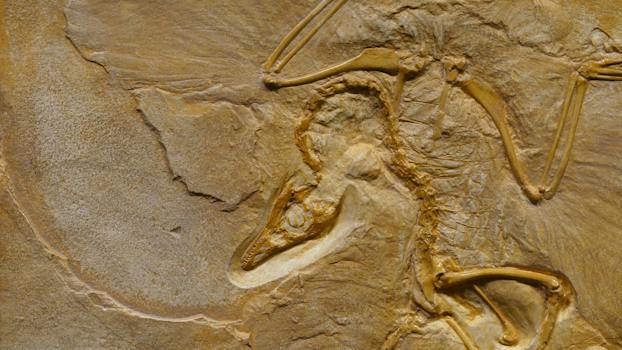

-
Table of Contents
Unveiling Earth's Ancient Secrets: A Definitive Guide to Decoding Fossils
Introduction
"Decoding the Enigma of Fossils: A Comprehensive Handbook on Unearthing Earth's Prehistoric Remnants" is a comprehensive guide that delves into the fascinating world of fossils. This handbook aims to provide readers with a deep understanding of the processes involved in fossil formation, the various types of fossils, and the techniques used to unearth and study these prehistoric remnants. By unraveling the mysteries of fossils, this book serves as an invaluable resource for both amateur fossil enthusiasts and professional paleontologists alike.
The Importance of Fossil Analysis in Understanding Earth's History
Decoding the Enigma of Fossils: A Comprehensive Handbook on Unearthing Earth's Prehistoric Remnants
The Importance of Fossil Analysis in Understanding Earth's History
Fossils, the preserved remains or traces of ancient organisms, hold a wealth of information about Earth's history. These remnants provide scientists with valuable insights into the evolution of life on our planet, allowing them to reconstruct past ecosystems and understand the processes that have shaped our world. Fossil analysis is a crucial tool in unraveling the mysteries of Earth's past, and its importance cannot be overstated.
One of the primary reasons why fossil analysis is so significant is its ability to provide a timeline of Earth's history. By studying the different types of fossils found in various rock layers, scientists can determine the relative ages of these rocks and the organisms that once inhabited them. This allows them to create a chronological sequence of events, tracing the development and extinction of species over millions of years. Through this process, scientists have been able to piece together the story of life on Earth, from the earliest single-celled organisms to the complex ecosystems we see today.
Fossil analysis also plays a crucial role in understanding the processes that have shaped our planet. By examining the distribution of fossils across different continents, scientists can reconstruct ancient landmasses and track the movement of tectonic plates over time. This information helps us understand how continents have drifted and collided, leading to the formation of mountains, oceans, and other geological features. Fossil evidence has also shed light on past climate change events, such as ice ages and periods of global warming, providing valuable insights into the Earth's climate system and its sensitivity to external factors.
Furthermore, fossil analysis allows scientists to study the evolution of species and the mechanisms driving it. By comparing the anatomical features of fossils with those of living organisms, researchers can identify similarities and differences, revealing patterns of evolutionary change. This information helps us understand how species have adapted to their environments and how new species have emerged over time. Fossil analysis has provided evidence for key evolutionary concepts, such as natural selection and the gradual accumulation of small changes over long periods. It has also helped us understand the origins of major groups of organisms, such as birds and mammals, and their relationships to one another.
In addition to its scientific significance, fossil analysis also holds great educational and cultural value. Fossils capture the imagination of people of all ages, allowing us to connect with the distant past and marvel at the diversity of life that once existed on Earth. Museums and educational institutions around the world display fossils, providing a window into our planet's history and inspiring future generations of scientists. Fossils also play a crucial role in paleoart, the reconstruction of prehistoric life, allowing artists to bring these ancient creatures back to life and create vivid depictions of past ecosystems.
In conclusion, fossil analysis is a vital tool in understanding Earth's history. It provides a timeline of events, helps us understand geological processes, reveals patterns of evolution, and captures the imagination of people worldwide. By decoding the enigma of fossils, scientists continue to uncover the secrets of our planet's past, enriching our knowledge of the natural world and our place within it.
Unraveling the Mysteries of Fossil Formation and Preservation

Decoding the Enigma of Fossils: A Comprehensive Handbook on Unearthing Earth's Prehistoric Remnants
Unraveling the Mysteries of Fossil Formation and Preservation
Fossils have long captivated the imagination of scientists and enthusiasts alike, providing a window into the distant past and shedding light on the evolution of life on Earth. But how exactly do these remnants of prehistoric organisms come to be? What processes are at play that allow us to uncover and study these ancient treasures? In this section, we will delve into the mysteries of fossil formation and preservation, unraveling the intricate processes that have shaped our understanding of the past.
Fossil formation begins with the death of an organism. When an organism dies, it is typically subjected to a series of natural processes that ultimately lead to its preservation. One of the most common forms of fossilization is known as permineralization. This occurs when minerals in groundwater seep into the pores of the organism's remains, gradually replacing the organic material with minerals such as silica or calcite. Over time, the minerals harden, preserving the structure of the organism and creating a fossil.
Another process that can lead to fossilization is known as replacement. In this case, the original organic material is completely dissolved, and minerals take its place. This can result in exquisite detail being preserved, such as the delicate wings of an ancient insect or the intricate patterns on a leaf. Replacement can occur in a variety of environments, from the depths of the ocean to the arid deserts of the world.
But what about the soft tissues of organisms? How do we find fossils that preserve more than just bones and shells? In some exceptional cases, the conditions are just right for the preservation of soft tissues. One such example is the famous Burgess Shale in Canada, where the remains of ancient marine organisms are preserved in exquisite detail. The fine-grained sediment of the shale acted as a perfect medium for the preservation of soft tissues, allowing us to glimpse into the complex anatomy of creatures that lived over 500 million years ago.
Once a fossil has formed, it must then be preserved and protected until it can be unearthed by paleontologists. This is where the process of fossilization intersects with the forces of erosion and geological activity. Fossils can be exposed through the gradual wearing away of overlying sediment, or they can be brought to the surface through tectonic forces such as uplift or the creation of new landforms. In some cases, fossils are even discovered during construction projects or mining operations, providing unexpected glimpses into the past.
Once a fossil has been discovered, it must be carefully excavated and prepared for study. This delicate process requires a combination of patience, skill, and scientific expertise. Fossils are often encased in hard rock or sediment, and removing them without damaging the delicate remains can be a painstaking task. Paleontologists use a variety of tools, from small brushes and dental picks to more advanced techniques such as acid preparation or CT scanning, to carefully extract and study the fossils.
In conclusion, the formation and preservation of fossils are complex processes that have allowed us to unlock the secrets of Earth's prehistoric past. From the gradual replacement of organic material with minerals to the exceptional preservation of soft tissues, fossils provide a unique glimpse into the evolution of life on our planet. Through careful excavation and study, paleontologists continue to unravel the mysteries of the past, piece by piece, bringing us closer to understanding the rich tapestry of life that has existed on Earth for millions of years.
Exploring the Techniques and Tools Used in Fossil Identification and Classification
Decoding the Enigma of Fossils: A Comprehensive Handbook on Unearthing Earth's Prehistoric Remnants
Exploring the Techniques and Tools Used in Fossil Identification and Classification
Fossils have long fascinated scientists and enthusiasts alike, providing a window into the Earth's ancient past. These remnants of prehistoric life offer valuable insights into the evolution of various species and the history of our planet. However, deciphering the secrets held within fossils requires a combination of specialized techniques and tools. In this section, we will explore the methods used in fossil identification and classification, shedding light on the intricate process of unraveling Earth's prehistoric remnants.
One of the primary techniques employed in fossil identification is comparative anatomy. By comparing the skeletal structures of modern organisms with those found in fossils, scientists can determine the evolutionary relationships between species. This method allows them to identify similarities and differences in bone structure, providing clues about the ancient creatures' lifestyles and behaviors.
Another crucial tool in fossil identification is the microscope. Microscopic analysis allows scientists to examine the fine details of fossils, such as the microscopic structures of bones, teeth, and shells. By studying these minute features, researchers can gain a deeper understanding of the organism's biology and its place in the evolutionary tree.
In addition to comparative anatomy and microscopy, scientists also utilize a range of imaging techniques to study fossils. X-ray imaging, for example, can reveal hidden structures within fossils without the need for destructive sampling. This non-invasive method allows researchers to examine the internal anatomy of fossils, providing valuable information about their internal structures and potential pathologies.
Furthermore, advanced imaging techniques such as computed tomography (CT) scanning have revolutionized the field of paleontology. CT scans generate detailed 3D images of fossils, allowing scientists to visualize the internal structures in unprecedented detail. This technology has proven particularly useful in studying delicate or rare specimens, as it eliminates the need for physical manipulation and reduces the risk of damage.
In recent years, molecular techniques have also become increasingly important in fossil identification and classification. By extracting and analyzing ancient DNA from fossils, scientists can gain insights into the genetic makeup of extinct species. This method has allowed researchers to reconstruct the evolutionary relationships between different organisms and even uncover the presence of ancient diseases.
To complement these techniques, paleontologists rely on a variety of specialized tools. Fossil preparation tools, such as chisels, brushes, and dental picks, are used to carefully remove surrounding rock and sediment from fossils without damaging the delicate remains. Additionally, measuring tools, such as calipers and rulers, are used to record precise measurements of fossils, aiding in their classification and comparison.
Lastly, the use of databases and digital resources has greatly facilitated the identification and classification of fossils. Online databases provide access to a vast collection of fossil records, allowing researchers to compare their findings with previously documented specimens. Digital imaging and modeling software also enable scientists to create virtual reconstructions of fossils, enhancing their understanding of the organisms' anatomy and morphology.
In conclusion, the identification and classification of fossils require a combination of techniques and tools. Comparative anatomy, microscopy, imaging techniques, molecular analysis, and specialized tools all play a crucial role in unraveling the mysteries of Earth's prehistoric remnants. By employing these methods, scientists can piece together the puzzle of ancient life, shedding light on the evolution of species and the history of our planet.
Q&A
1. What is "Decoding the Enigma of Fossils: A Comprehensive Handbook on Unearthing Earth's Prehistoric Remnants" about?
- It is a comprehensive handbook that provides information on uncovering and understanding prehistoric fossils.
2. Who is the author of "Decoding the Enigma of Fossils: A Comprehensive Handbook on Unearthing Earth's Prehistoric Remnants"?
- The author of the book is not specified in the given information.
3. What is the purpose of "Decoding the Enigma of Fossils: A Comprehensive Handbook on Unearthing Earth's Prehistoric Remnants"?
- The purpose of the book is to provide a comprehensive guide for individuals interested in studying and interpreting prehistoric fossils.
Conclusion
In conclusion, "Decoding the Enigma of Fossils: A Comprehensive Handbook on Unearthing Earth's Prehistoric Remnants" serves as a valuable resource for understanding and interpreting fossils. It provides a comprehensive guide to the process of fossil discovery, excavation, and analysis, offering insights into Earth's prehistoric past. This handbook is an essential tool for paleontologists, archaeologists, and anyone interested in unraveling the mysteries of ancient life forms preserved in the fossil record.











